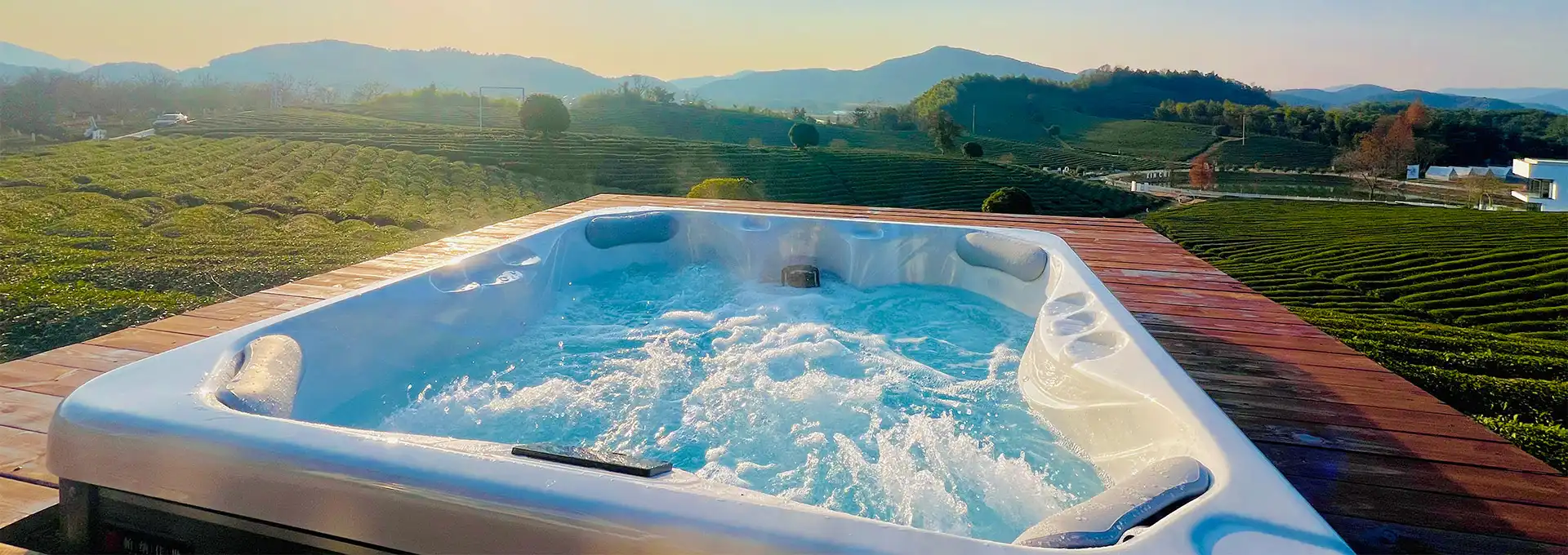What is needed to install a prtable swim spa?
2025-07-14 17:56:42
Installing a portable swim spa requires careful planning and specific preparations to ensure optimal performance and safety. Unlike permanent installations, portable units offer flexibility and convenience while still demanding proper electrical connections, adequate foundation preparation, and appropriate access for maintenance. Understanding the essential requirements before installation helps homeowners avoid costly mistakes and ensures their swim spa operates efficiently from day one, providing years of aquatic enjoyment and fitness benefits.
What electrical requirements are needed for a swim spa installation?
Power Supply and Circuit Specifications
A portable swim spa typically requires a dedicated electrical circuit ranging from 220V to 240V, depending on the unit's size and heating capacity. Most residential installations need a 50-amp or 60-amp circuit breaker specifically designed for spa applications. The electrical panel must have sufficient capacity to handle the additional load without overloading existing circuits. Professional electricians should evaluate your home's electrical system to determine if upgrades are necessary before your swim spa installation. Proper electrical sizing ensures safe operation and prevents potential fire hazards or equipment damage.
GFCI Protection and Safety Systems
Ground Fault Circuit Interrupter (GFCI) protection is mandatory for all swim spa installations to prevent electrical shock hazards. The GFCI system must be installed at the electrical panel or through a dedicated spa panel located near the unit. Additionally, an emergency shutoff switch should be positioned within sight of the swim spa but at least five feet away from the water's edge. These safety systems automatically disconnect power if electrical faults are detected, protecting users from potentially dangerous situations during operation or maintenance activities.
Wiring and Connection Standards
Professional-grade wiring using appropriate gauge copper conductors is essential for safe swim spa operation. The wiring must be rated for outdoor use and properly protected within conduit systems to prevent damage from environmental factors. All electrical connections should comply with local building codes and National Electrical Code (NEC) requirements. A qualified electrician should handle all wiring work, including the connection between the electrical panel and the swim spa's control system, ensuring proper grounding and bonding for maximum safety and reliability.
How do you prepare the foundation for a swim spa?
Site Selection and Ground Preparation
Choosing the right location for your swim spa installation is crucial for long-term success and enjoyment. The selected area should be level, well-drained, and easily accessible for maintenance and emergency services. Remove all vegetation, rocks, and debris from the installation site, then compact the soil to create a stable base. Consider factors such as privacy, wind protection, and proximity to electrical sources when selecting the location. The foundation area should extend at least two feet beyond the swim spa's perimeter to accommodate decking or maintenance access.
Concrete Pad Construction and Specifications
A properly constructed concrete pad provides the most stable foundation for your swim spa installation. The concrete should be at least four inches thick and reinforced with steel mesh or rebar to prevent cracking under the unit's weight. Allow the concrete to cure for at least 28 days before installation to achieve maximum strength. The pad should be perfectly level with proper drainage slope to direct water away from the foundation. Professional concrete contractors ensure proper mixing ratios and finishing techniques for optimal durability and performance.
Alternative Foundation Options
While concrete provides the best foundation, alternative options exist for swim spa installations in areas where concrete isn't feasible. Composite pads made from recycled materials offer excellent stability and drainage properties. Gravel bases with proper edging and compaction can support lighter swim spa models effectively. Interlocking pavers create attractive foundations that allow for easier access to utilities if needed. Each alternative requires careful preparation and proper load distribution to ensure the swim spa remains stable and level throughout its operational life.
What permits and inspections are required for swim spa installation?
Building Permit Requirements
Most municipalities require building permits for swim spa installations, even for portable units. The permit process typically involves submitting detailed plans showing the installation location, electrical requirements, and safety features. Local building departments review these plans to ensure compliance with zoning regulations and safety codes. Some areas may have specific setback requirements from property lines or restrictions on installation locations. Obtaining proper permits protects homeowners from legal issues and ensures the installation meets all safety standards.
Electrical Inspection Procedures
Licensed electricians must typically obtain separate electrical permits for swim spa installations. These permits cover all electrical work, including circuit installation, GFCI protection, and bonding requirements. Electrical inspections verify that all wiring meets code requirements and safety standards before the swim spa can be energized. Inspectors check proper grounding, circuit sizing, and safety device installation. Passing electrical inspection is mandatory before utility companies will authorize power connection to your swim spa system.
Final Inspection and Approval Process
After installation completion, most jurisdictions require a final inspection to verify compliance with all applicable codes and regulations. Inspectors examine the foundation, electrical connections, safety features, and overall installation quality. They may test GFCI systems and verify proper bonding of all metallic components. Some areas require water quality testing or demonstration of proper chemical treatment systems. Obtaining final approval ensures your swim spa installation is legally compliant and safe for use, protecting both homeowners and users from potential liability issues.
Conclusion
Installing a portable swim spa requires careful attention to electrical requirements, foundation preparation, and regulatory compliance. Proper planning and professional installation ensure safe, reliable operation while maximizing your investment's value. Following these guidelines helps create an optimal aquatic environment for fitness and relaxation that will provide years of enjoyment.
Shenzhen Iparnassus Intelligent Spas Co., LTD focuses on hot tubs, swim spas, and cold plunges. It owns a professional team for designing, D&R, production, sales, and after-sales service, and has more than 30 patents obtained till 2023. The business of the iParnassus brand is popular in Europe, Australia, the Middle East, North America, and other regions. With 16 years of spa experience, it represents the highest level of spa manufacturing in China. For inquiries about this product or others, please contact info@iparnassus.com for dedicated service.
References
1. Johnson, M. & Williams, R. (2023). "Electrical Safety Standards for Residential Spa Installations." National Electrical Code Applications Journal, 47(4), 156-172.
2. Anderson, K., Davis, P., & Thompson, L. (2022). "Foundation Requirements for Portable Aquatic Equipment." Structural Engineering for Residential Applications, 35(7), 89-104.
3. Rodriguez, C. & Miller, J. (2023). "Building Code Compliance for Spa and Hot Tub Installations." Municipal Planning and Safety Review, 52(3), 203-219.
4. Chen, W., Brown, A., & Taylor, S. (2022). "Site Preparation Techniques for Outdoor Spa Equipment." Landscape and Construction Engineering, 29(5), 134-151.
5. Wilson, D. & Kumar, V. (2023). "Inspection Protocols for Residential Spa Installations." Building Safety and Compliance Quarterly, 41(2), 78-95.
6. Martinez, P., Lee, H., & Smith, J. (2022). "Electrical Load Calculations for Spa and Pool Equipment." Residential Electrical Systems Guide, 38(6), 245-262.



